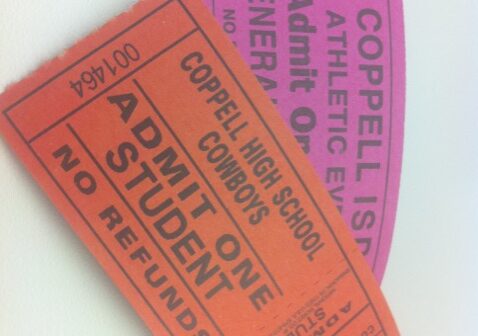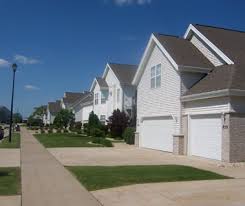By the time I arrived at Coppell High School this morning to pick up tickets for Friday night’s game  against Euless Trinity–about 7:30 a.m.–a line was already forming around the building. So it’s no surprise that by mid-afternoon, a friend (and fellow Coppellian) had to drive to the Trinity field house to snatch up some tickets of her own.
against Euless Trinity–about 7:30 a.m.–a line was already forming around the building. So it’s no surprise that by mid-afternoon, a friend (and fellow Coppellian) had to drive to the Trinity field house to snatch up some tickets of her own.
The high school football match-up has all the makings of a great game: Both teams are 13-0 and are playing for the Class 5A Division I Region I title. The only thing that stinks is the venue. Trinity won the coin toss and opted to play Friday night at Dragon Stadium in Southlake, which has a seating capacity of about 12,000. (Coppell had wanted a Saturday game at SMU.)
Even when CHS plays Southlake during the regular season, the stadium sells out. Trinity’s choice gives Coppell one less day to prepare, but it means a lot of fans–from both schools and of high school football in general–will be left out in the cold.







 biggest foreign supplier of energy to the U.S., as well as Texas’ second-largest trading partner, after Mexico. And that the relationship with Texas plays out in sometimes-surprising ways. “Did you know,” Doer said with a smile during a visit to Dallas yesterday, “that the highest per-capita consumers of [7-Eleven] Slurpees in North America is Manitoba? And that the highest per-capita consumers of Crown Royal–made in Gimli, Manitoba, with beautiful clean water–is Texas?”
biggest foreign supplier of energy to the U.S., as well as Texas’ second-largest trading partner, after Mexico. And that the relationship with Texas plays out in sometimes-surprising ways. “Did you know,” Doer said with a smile during a visit to Dallas yesterday, “that the highest per-capita consumers of [7-Eleven] Slurpees in North America is Manitoba? And that the highest per-capita consumers of Crown Royal–made in Gimli, Manitoba, with beautiful clean water–is Texas?”











